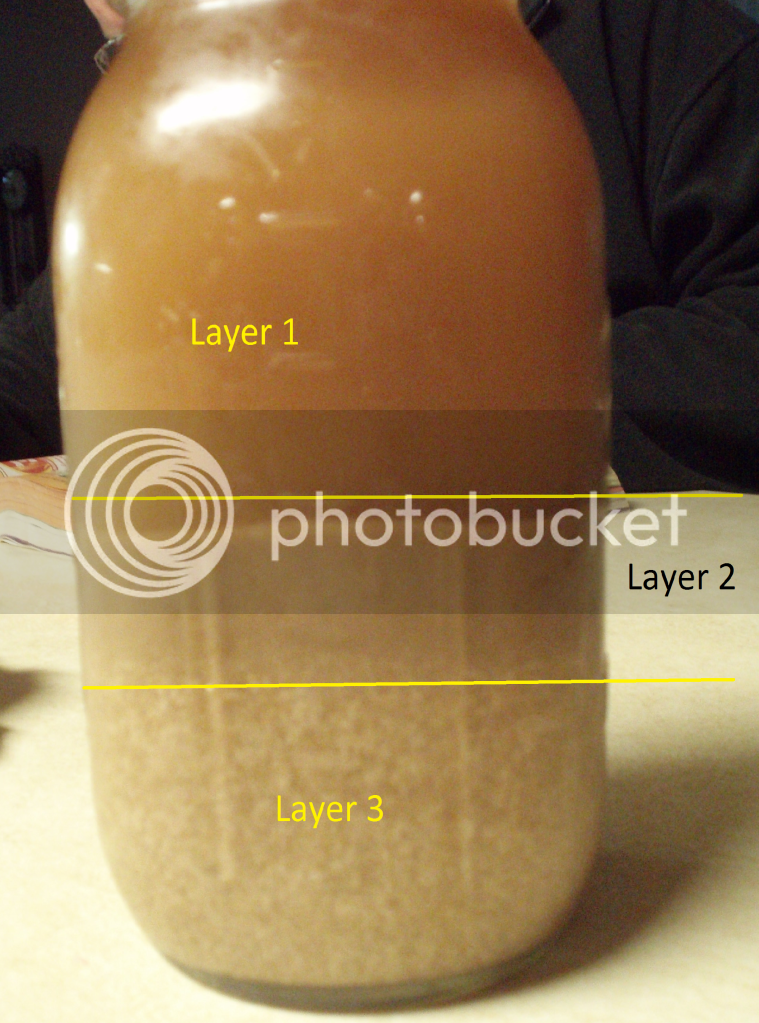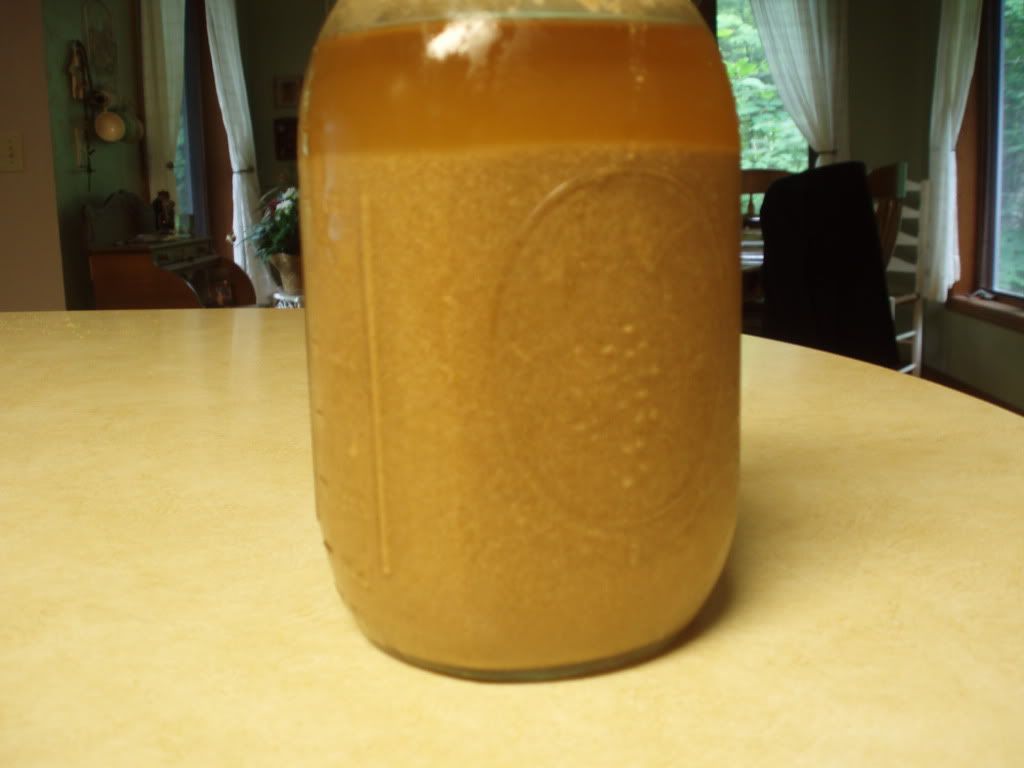I'm in the middle of washing my yeast and I was wondering if anyone could just give me a little information on what is in each of the layers in the picture. I was assuming that the bottom layer consists mostly of the trub and such, the middle and top layers would be mostly yeast. Am I correct for the most part?








